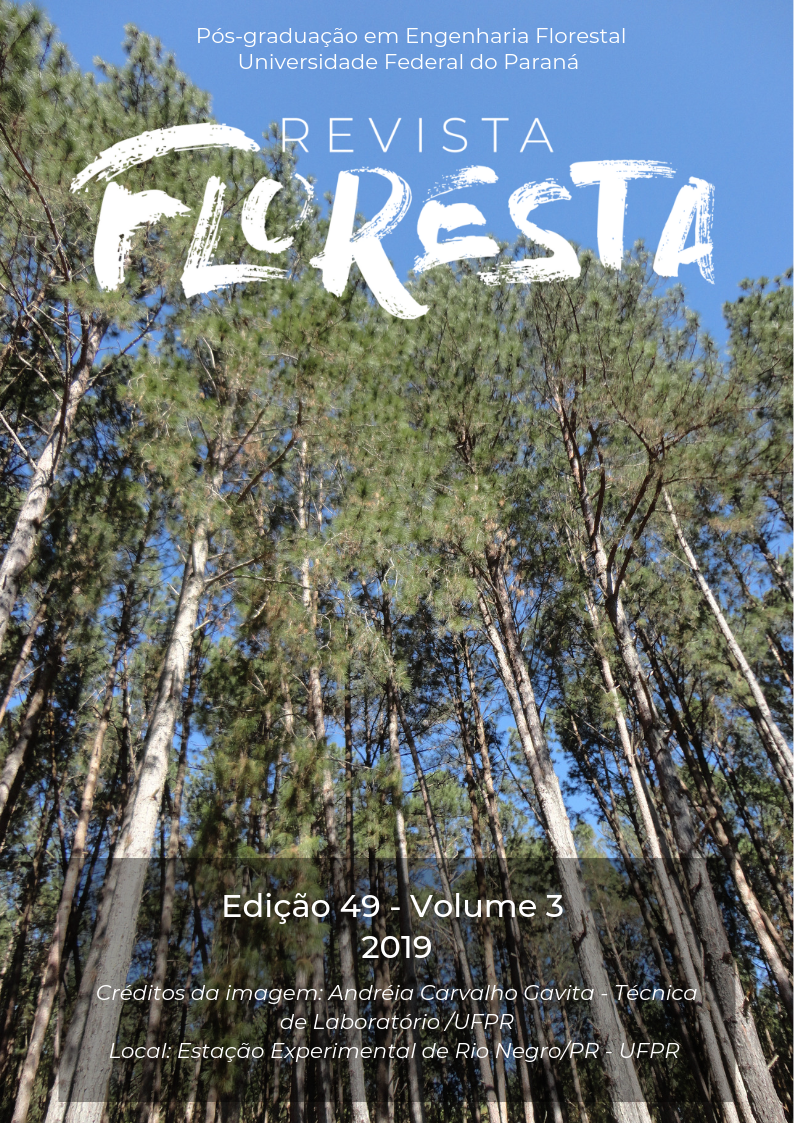MORPHOMETRY OF TRACHEIDS OF Pinus taeda L. FROM A PRUNING TEST IN NE ARGENTINA.
DOI:
https://doi.org/10.5380/rf.v49i3.59546Palavras-chave:
tracheids anatomy, wood quality, pruning, stand vertical structureResumo
The northeast region of Argentina is characterized by fast-growing forest plantations, Pinus taeda among them. The objective of this study was to evaluate the influence of pruning and stand structure on the morphometric characteristics of tree tracheids. We evaluated 18 trees of 16 years old, from a silvicultural stand essay, with 1660 plants/ha as initial density, without thinning, three pruning treatments 0%, 50% and 70% removal of the green crown belong to the dominant, codominant and suppressed strata. Tree slices were taken at 1.3 m height, the conditioned samples were observed and measured with a microscope with digital camera. The data was analyzed using mixed linear models. Pruning did not have effect on the width and length of tracheids, but it affected to the cell wall thickness, which decreased with increasing pruning intensity. While the social position (stratum) had significant influences on the length of tracheids, given greater for individual in dominant stratum, followed by codominant and suppressed stratum. The cell wall width and thickness were not affected by the stratum. Regardless of the social position in the stand, the tracheid’s length showed an increasing pattern from pith to bark with the lower values near to the pith.
Downloads
Publicado
Como Citar
Edição
Seção
Licença
Direitos Autorais para artigos publicados nesta revista são do autor, com direitos de primeira publicação para a revista. Em virtude da aparecerem nesta revista de acesso público, os artigos são de uso gratuito, com atribuições próprias, em aplicações educacionais e não-comerciais.A revista, seguindo a recomendações do movimento Acesso Aberto, proporciona acesso publico a todo o seu conteudo, seguindo o principio de que tornar gratuito o acesso a pesquisas gera um maior intrcambio global de conhecimento.
Conteúdos do periódico licenciados sob uma CC BY-NC-SA 4.0



